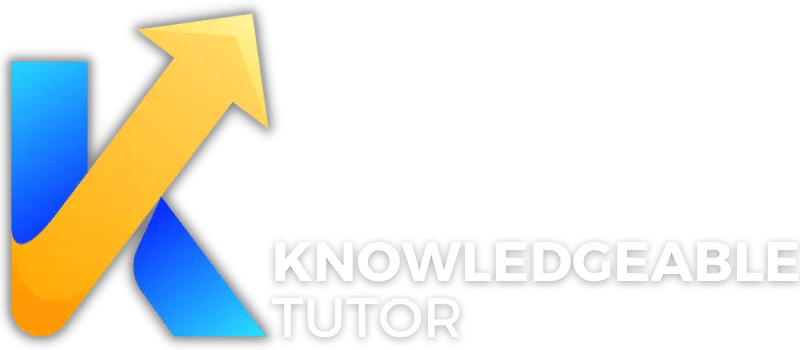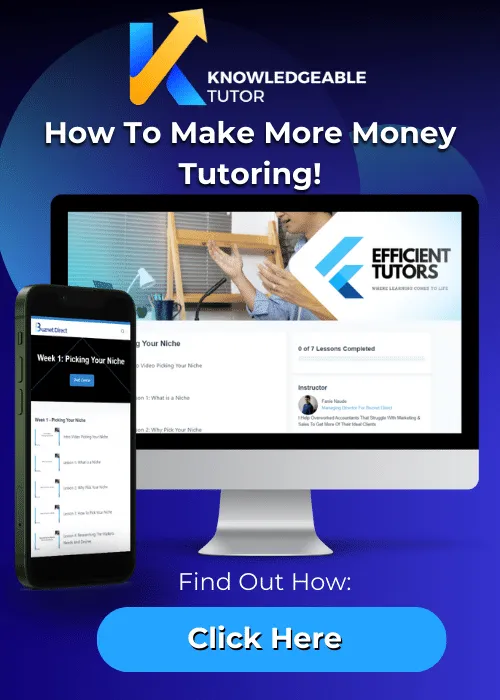Teaching Different Subjects:
Tips and Techniques

Fanie Naude
CEO & Founder of Knowledgeable Tutor, Buznet Direct, YMC & Naude Consulting

Fanie Naude
CEO & Founder of Knowledgeable Tutor, Buznet Direct, YMC & Naude Consulting

Introduction: Navigating the Complex Landscape of Multi-Subject Teaching
Welcome to this comprehensive guide on multi-subject teaching, a realm that is as rewarding as it is challenging. As educators in the digital age, we find ourselves at the intersection of traditional pedagogy and technological innovation. This guide aims to serve as your compass, helping you navigate through the complexities of teaching multiple subjects effectively. Whether you are a seasoned educator or a novice tutor, this article will equip you with the strategies, tools, and ethical considerations you need to excel in a multi-subject environment.
As Albert Einstein once said, "Education is not the learning of facts, but the training of the mind to think." In line with this, our guide goes beyond mere instructional techniques to delve into the psychology of effective teaching and learning. We will explore:
- Pedagogical Flexibility: How to adapt your teaching style to meet diverse learning needs.
- Lecture-Based vs. Interactive Instruction: A comparative analysis to help you choose the right approach for each subject.
- Subject-Specific Strategies: Tailored methodologies to enhance learning outcomes in Math, Science, Humanities, and Languages.
- Measuring Your Effectiveness: Metrics and tools to gauge your impact as an educator.
- Future Trends: A glimpse into the innovations that are set to revolutionize multi-subject teaching.
- Special Needs and Inclusivity: Strategies to ensure that no student is left behind.
- Ethical Guidelines: A framework to uphold the highest standards of academic integrity and confidentiality.
So, let's embark on this enlightening journey to elevate your teaching skills, enrich your students' learning experiences, and set the stage for academic excellence.

Understanding the Landscape of Different Subjects
The realm of education is as diverse as the subjects it encompasses. From the abstract theories of mathematics to the tangible experiments in physics, each subject presents its unique set of challenges and opportunities. As an educator, your role is not just to disseminate information but to ignite curiosity and foster understanding. This section aims to provide a panoramic view of the various subjects commonly taught and the unique challenges they present.
The Multifaceted World of Subjects
- Mathematics: Often seen as abstract and complex, requiring logical reasoning.
- Science: Demands empirical evidence and often involves hands-on experiments.
- Humanities: Requires interpretative skills and emotional intelligence.
- Languages: Necessitates a grasp of syntax, semantics, and often, culture.
- Arts: Calls for creativity and subjective interpretation.
Unique Challenges
- Engagement: Keeping students interested varies from subject to subject.
- Resource Availability: Science might require a lab; arts might need a studio.
- Assessment Methods: Objective tests for Math and Science, subjective evaluations for Arts and Humanities.
As Albert Einstein once said, "It is the supreme art of the teacher to awaken joy in creative expression and knowledge." Understanding the landscape of different subjects is the first step in this artistic endeavor.

The Importance of Pedagogical Flexibility
In the ever-evolving educational landscape, pedagogical flexibility is not just an asset; it's a necessity. This section delves into why being versatile in your teaching methods is crucial for success across various subjects.
The Need for Flexibility
- Changing Student Demographics: A diverse student body requires diverse teaching methods.
- Technological Advancements: The digital age demands digital literacy across subjects.
- Globalization: Preparing students for a globalized world often requires a multi-disciplinary approach.
Benefits of Being Flexible
- Enhanced Engagement: Different subjects often require different engagement strategies.
- Better Learning Outcomes: Flexibility allows you to adapt to different learning styles.
- Personal and Professional Growth: A flexible approach can make you a more adaptable and sought-after educator.
Strategies for Flexibility
- Continued Education: Stay updated with the latest teaching methods.
- Peer Reviews: Regular feedback from colleagues can offer new perspectives.
- Student Feedback: Sometimes the best insights come from the learners themselves.
In the words of Bruce Lee, "Be water, my friend." Flexibility in your teaching methods allows you to adapt and flow in any educational setting, enhancing not just your students' learning experience but also your own professional development.

Differentiated Instruction Across Subjects
Differentiated instruction is the educational elixir for the modern, diverse classroom. It's not a one-size-fits-all approach but a tailored methodology that addresses individual learning styles, abilities, and interests. This section will guide you through the nuances of applying differentiated instruction across various subjects.
The Concept of Differentiated Instruction
- What Is It?: A teaching approach that modifies content, process, and product based on student readiness, interest, and learning profile.
- Why Is It Important?: It caters to diverse learning needs, thus enhancing student engagement and outcomes.
Implementing Differentiated Instruction
- Content Differentiation: Adapting what you teach. For example, using simpler equations in math for beginners and complex ones for advanced students.
- Process Differentiation: Modifying how students acquire content. In history, this could mean offering videos, readings, or interactive timelines.
- Product Differentiation: Altering how students demonstrate learning. In science, some might build models while others write research papers.
Subject-Specific Strategies
- Math: Use manipulatives for tactile learners.
- Science: Incorporate lab experiments and virtual simulations.
- Humanities: Offer choices in essay topics or creative projects.
- Languages: Use interactive apps for vocabulary building.
For a deeper dive into crafting lesson plans that incorporate differentiated instruction, refer to our guide on Creating Effective Lesson Plans for Online Tutoring.
As Benjamin Franklin aptly put it, "Tell me and I forget, teach me and I may remember, involve me and I learn."

Lecture-Based Instruction: When and Where?
Lecture-based instruction, often seen as the cornerstone of traditional education, still holds value in the modern educational landscape. However, its effectiveness varies from subject to subject. This section aims to delineate the subjects that most benefit from a lecture-based approach.
The Nature of Lecture-Based Instruction
- What Is It?: A teacher-centered approach where information is primarily delivered verbally.
- Pros and Cons: Efficient for content delivery but may lack student engagement.
Subjects Suited for Lectures
- Mathematics: For introducing new formulas and theorems.
- History: For chronological narratives and context setting.
- Literature: For thematic discussions and literary analysis.
When to Avoid Lectures
- Practical Subjects: Like physical education or lab-based sciences.
- Creative Subjects: Such as art and music, which require hands-on practice.
Hybrid Approaches
- Flipped Classroom: Students review lecture materials at home, freeing class time for interactive activities.
- Interactive Lectures: Incorporating Q&A sessions, quizzes, or discussions during the lecture.
For more insights into balancing different teaching methods, you may find our article on Balancing Tutoring with Your Personal Life useful.
As the Chinese proverb goes, "If you are planning for a year, sow rice; if you are planning for a decade, plant trees; if you are planning for a lifetime, educate people." Lecture-based instruction, when applied judiciously, can be a powerful tool in your educational arsenal.

Technology-Based Learning Across the Board
In the digital age, technology is not just an add-on but an integral part of the educational ecosystem. This section explores how to seamlessly incorporate technology tools across various subjects to enhance learning outcomes.
The Rise of EdTech
- What Is EdTech?: Educational Technology, commonly known as EdTech, involves the use of technology to facilitate or enhance learning.
- Why It Matters: It offers interactive, personalized, and accessible learning experiences.
Subject-Specific Tech Tools
- Math: Platforms like Khan Academy for interactive problem-solving.
- Science: Virtual labs and simulation software.
- Humanities: Digital archives and e-libraries.
- Languages: Language learning apps like Duolingo.
Best Practices for Tech Integration
- Choose Wisely: Not all tech tools are created equal. Select those that align with your educational objectives.
- Be Mindful of Screen Time: Balance tech use with other forms of learning.
- Data Security: Ensure the tools you use comply with data protection regulations.
For a comprehensive list of tools and technologies, refer to our guide on Tools and Technology for Effective Online Tutoring.
As Steve Jobs once said, "Technology is nothing. What's important is that you have faith in people, that they're basically good and smart, and if you give them tools, they'll do wonderful things with them."

Group Learning Strategies
Group learning is a dynamic educational strategy that leverages social interactions for enhanced learning. This section aims to provide actionable tips on how to facilitate group learning effectively across different subjects.
The Psychology of Group Learning
- What Is It?: A teaching approach that involves students working together to solve problems or achieve a common goal.
- Benefits: Enhances social skills, fosters collaboration, and often leads to deeper understanding.
Implementing Group Learning
- Group Composition: Mix abilities and learning styles for a balanced group.
- Roles and Responsibilities: Assign specific tasks to each group member.
- Assessment: Use both group and individual assessments to gauge learning outcomes.
Subject-Specific Group Activities
- Math: Collaborative problem-solving sessions.
- Science: Group lab experiments.
- Humanities: Debate or discussion circles.
- Languages: Language exchange meetups within the class.
For more on maintaining student engagement during group activities, you might find our article on Maintaining Student Engagement in Online Tutoring beneficial.
As Helen Keller wisely stated, "Alone we can do so little; together we can do so much." Group learning, when executed well, can be a powerful catalyst for academic success and social development.

Individual Learning Plans
Individual Learning Plans (ILPs) are the educational GPS that guide students through the labyrinth of academic subjects. Tailored to each student's needs, ILPs offer a roadmap for achieving specific learning outcomes. This section delves into the creation and implementation of subject-specific ILPs.
The Anatomy of an ILP
- What Is an ILP?: A customized plan that outlines learning objectives, resources, and assessment methods for each student.
- Why ILPs Matter: They offer a structured approach to learning, making it easier to track progress and make adjustments.
Crafting Subject-Specific ILPs
- Math: Focus on mastering specific concepts or formulas.
- Science: Emphasize experimental techniques or scientific literacy.
- Humanities: Target critical thinking or textual analysis skills.
- Languages: Prioritize vocabulary, grammar, or conversational fluency.
Monitoring and Updating ILPs
- Regular Reviews: Periodic assessments to gauge progress.
- Adjustments: Modify the ILP based on performance and feedback.
For more on crafting effective lesson plans that align with ILPs, consult our guide on Creating Effective Lesson Plans for Online Tutoring.
As educational philosopher John Dewey stated, "Education is not preparation for life; education is life itself." ILPs serve as the lifeblood of a student's educational journey, providing a structured yet flexible framework for learning.

Behavior Management Across Subjects
Managing classroom behavior is akin to conducting an orchestra; each subject has its own rhythm and tempo. This section aims to provide strategies for maintaining a harmonious learning environment across different subjects.
The Dynamics of Classroom Behavior
- What Influences Behavior?: Factors like subject matter, teaching style, and classroom environment can impact student behavior.
- Why Management Matters: A well-managed classroom enhances focus and facilitates effective learning.
Subject-Specific Behavior Strategies
- Math and Science: Use interactive methods to keep students engaged and minimize disruptive behavior.
- Humanities: Foster respectful debates and discussions.
- Languages: Implement immersive activities to keep students attentive.
Proactive vs. Reactive Management
- Proactive: Establish rules and expectations at the beginning of the course.
- Reactive: Address issues as they arise, but aim to minimize the need for reactive measures.
For more insights into maintaining a balanced tutoring life, you might find our article on Balancing Tutoring with Your Personal Life beneficial.
As the renowned educator Harry Wong said, "The number one problem in the classroom is not discipline; it is the lack of procedures and routines." Effective behavior management is less about control and more about creating a conducive learning environment.

Blended Learning: A Hybrid Approach
Blended learning is the educational equivalent of a Swiss Army knife—versatile, adaptable, and effective across a range of subjects. This section explores how to integrate online and offline methods to create a rich learning experience.
What is Blended Learning?
- Definition: A teaching method that combines traditional classroom instruction with online learning.
- Advantages: Offers the best of both worlds, enabling real-time interaction and self-paced learning.
Subject-Specific Blended Learning Strategies
- Math: Use online simulations to supplement classroom problem-solving.
- Science: Integrate virtual labs with hands-on experiments.
- Humanities: Combine online research with in-class discussions.
- Languages: Utilize language apps alongside conversational practice.
Best Practices for Implementing Blended Learning
- Seamless Integration: Ensure that online and offline components complement each other.
- Assessment: Use a mix of online quizzes and in-person tests.
For more on understanding different online tutoring platforms that facilitate blended learning, refer to our guide on Understanding Different Online Tutoring Platforms.
As educational theorist Lev Vygotsky said, "Learning is more than the acquisition of the ability to think; it is the acquisition of many specialized abilities for thinking about a variety of things."

Culturally Responsive Teaching
In an increasingly globalized world, classrooms are melting pots of diverse cultures. Culturally responsive teaching is not just a pedagogical choice but a necessity. This section discusses how to adapt your teaching methods to suit a diverse student body.
The Importance of Cultural Sensitivity
- What Is It?: An approach that respects and incorporates cultural diversity in teaching.
- Why It Matters: Enhances student engagement and fosters a more inclusive learning environment.
Subject-Specific Cultural Adaptations
- Math: Use examples that are culturally relevant.
- Science: Discuss scientific contributions from diverse cultures.
- Humanities: Include literature and history from various cultural perspectives.
- Languages: Be aware of dialectal variations and cultural nuances.
Strategies for Implementing Culturally Responsive Teaching
- Inclusive Curriculum: Ensure that the curriculum reflects diverse perspectives.
- Active Listening: Be open to student input and make adjustments as needed.
For more on the benefits of becoming an online tutor with a culturally responsive approach, you might find our article on The Benefits of Becoming an Online Tutor enlightening.
As Nelson Mandela wisely stated, "Education is the most powerful weapon which you can use to change the world." Culturally responsive teaching is a step towards making that change, one diverse classroom at a time.

Experiential Learning in Different Subjects
Experiential learning is the cornerstone of effective education. It's the "learn by doing" approach, and it's as versatile as it is impactful. This section will delve into how to apply real-world applications across various subjects.
The Theory Behind Experiential Learning
- Definition: Learning through reflection on doing, often contrasted with rote or didactic learning.
- Importance: Enhances retention and makes learning more engaging.
Subject-Specific Experiential Learning Strategies
- Math: Field trips to architectural landmarks to understand geometry.
- Science: Outdoor ecological studies for biology.
- Humanities: Museum visits for historical context.
- Languages: Cultural immersion experiences.
Implementing Experiential Learning
- Planning: How to integrate experiential learning into your lesson plans.
- Assessment: Methods for evaluating the effectiveness of experiential learning.
For more on creating effective lesson plans that incorporate experiential learning, see our guide on Creating Effective Lesson Plans for Online Tutoring.
As Confucius once said, "I hear and I forget. I see and I remember. I do and I understand."

Game-Based Learning Strategies
Game-based learning is not child's play; it's a sophisticated pedagogical approach that leverages the power of play to enhance learning. This section will explore how to make learning fun across different subjects.
The Psychology of Game-Based Learning
- What Is It?: Using game design elements in non-game contexts.
- Why It Works: Engages students and can improve retention and application of knowledge.
Subject-Specific Game-Based Strategies
- Math: Math puzzles and challenges.
- Science: Interactive simulations.
- Humanities: Historical role-playing games.
- Languages: Vocabulary-building games.
Best Practices for Game-Based Learning
- Balance: Striking the right balance between fun and educational content.
- Assessment: How to measure learning outcomes in a game-based environment.
For more on maintaining student engagement through game-based learning, you might find our article on Maintaining Student Engagement in Online Tutoring useful.
As Maria Montessori aptly put it, "Play is the work of the child." And in the context of education, play can also be the work of the adult, guiding the learner toward academic success.

Student-Centered Learning
The paradigm of student-centered learning shifts the focus from the teacher to the learner. This section will illuminate how to empower students to take charge of their learning across different subjects.
The Philosophy of Student-Centered Learning
- Definition: An approach that places the student at the center of the learning process.
- Importance: Increases engagement, autonomy, and ownership of learning.
Subject-Specific Student-Centered Strategies
- Math: Problem-solving tasks that require critical thinking.
- Science: Inquiry-based experiments.
- Humanities: Debate and discussion forums.
- Languages: Conversational practice sessions.
Implementing Student-Centered Learning
- Active Learning: Techniques for encouraging active participation.
- Feedback Loops: Creating a system for continuous feedback.
For more on this, our article on Maintaining Student Engagement in Online Tutoring offers valuable insights.
As educational reformer John Dewey stated, "Education is not preparation for life; education is life itself."

Online Learning Strategies
The digital age has revolutionized the way we teach and learn. This section will explore effective online teaching methods for different subjects.
The Dynamics of Online Learning
- What Is It?: Learning that takes place through digital platforms.
- Why It's Different: The unique challenges and benefits of online education.
Subject-Specific Online Strategies
- Math: Utilizing interactive whiteboards for equations.
- Science: Virtual labs and simulations.
- Humanities: Online archives for primary source materials.
- Languages: Language exchange platforms.
Best Practices for Online Learning
- Engagement: Strategies to keep students attentive in a virtual environment.
- Assessment: Adapting traditional assessment methods for online settings.
For a deeper dive into the world of online tutoring, you may find our comprehensive guide on Understanding Different Online Tutoring Platforms to be a valuable resource.
As Bill Gates once said, "Technology is just a tool. In terms of getting the kids working together and motivating them, the teacher is the most important."

Special Needs Considerations
Teaching students with special needs requires a nuanced approach that respects individual differences. This section delves into strategies for adapting your teaching methods across various subjects for students with special needs.
The Spectrum of Special Needs
- Physical Disabilities: Adaptations in science labs or physical education.
- Learning Disabilities: Tailored strategies in subjects like Math and Languages.
- Emotional and Behavioral Disorders: Special considerations in Social Studies and Humanities.
Subject-Specific Strategies
- Math: Use of tactile learning tools.
- Science: Simplified instructions and visual aids.
- Humanities: Storytelling and dramatization techniques.
- Languages: Use of assistive technology like text-to-speech.
For more insights, our guide on Online Tutoring for Special Needs Students is a valuable resource.
As Helen Keller said, "Alone we can do so little; together we can do so much."

Balancing Multiple Subjects
Juggling multiple subjects is akin to a high-wire act, requiring meticulous planning and time management. This section explores how to balance teaching different subjects effectively.
The Art of Prioritization
- Core Subjects: Prioritize subjects that require more intensive preparation.
- Electives: Allocate time based on student interest and engagement.
Time Management Techniques
- Batching: Group similar tasks together.
- Time Blocking: Allocate specific time slots for each subject.
- Buffer Time: Leave room for unexpected tasks and interruptions.
For tutors grappling with time management, our article on Effective Time Management Strategies for Online Tutors offers practical advice.
As Benjamin Franklin wisely noted, "Lost time is never found again."

Ethical Practices Across Subjects
Ethical considerations in teaching are not merely confined to the boundaries of academic honesty; they extend into the realm of equitable and respectful treatment across various subjects. Let's delve into the ethical dimensions that tutors must navigate.
Ethical Guidelines
- Academic Integrity: Upholding honesty in assessments and assignments.
- Confidentiality: Safeguarding student information.
- Inclusivity: Ensuring all students have equal access to learning resources.
Subject-Specific Ethical Concerns
- Science: Ethical considerations in experiments and data interpretation.
- Humanities: Addressing sensitive topics with care.
- Math: Ensuring fairness in assessments.
- Languages: Cultural sensitivity in language and literature studies.
For a deeper understanding, our article on Ethical Practices in Online Tutoring is a must-read.
As Immanuel Kant once said, "Act only according to that maxim whereby you can at the same time will that it should become a universal law."

Measuring Success in Different Subjects
Success in teaching is not a monolithic concept; it varies across subjects and is influenced by various metrics. This section aims to elucidate the tools and metrics for evaluating your effectiveness in different subjects.
Key Performance Indicators (KPIs)
- Student Engagement: Measured through participation and attentiveness.
- Assessment Scores: Quantitative measure of student understanding.
- Feedback: Qualitative insights from students and parents.
Subject-Specific Metrics
- Math and Science: Problem-solving abilities and application of concepts.
- Humanities: Critical thinking and essay-writing skills.
- Languages: Proficiency tests and conversational skills.
For a comprehensive guide on measuring your success, refer to our article on How to Measure Your Success as an Online Tutor.
As Albert Einstein aptly put it, "Not everything that is faced can be changed, but nothing can be changed until it is faced."

Future Trends in Multi-Subject Teaching
The pedagogical landscape is ever-evolving, influenced by technological advancements, societal shifts, and educational research. As tutors, staying abreast of future trends in multi-subject teaching is not just advisable—it's imperative.
Upcoming Methodologies
- AI-Driven Personalization: Tailoring education to individual learning styles.
- Virtual Reality (VR) Classrooms: Immersive learning experiences.
- Blockchain for Academic Records: Secure and transparent credentialing.
Technologies to Look Out For
- Learning Analytics Tools: For real-time performance tracking.
- Augmented Reality (AR) for Lab Simulations: Particularly in science subjects.
- Voice-Activated Classroom Assistants: Think of it as Siri or Alexa for the classroom.
For those interested in the future landscape, our Future of Online Tutoring: Trends to Watch article is a treasure trove of insights.
As William Gibson wisely said, "The future is already here — it's just not very evenly distributed."

Frequently Asked Questions (FAQ) on Multi-Subject Teaching
The realm of multi-subject teaching is as intricate as it is rewarding. It's only natural to have questions, and it's crucial to have them answered. Here, we delve into the most frequently asked questions about multi-subject teaching, drawing from authoritative sources and the "People Also Ask" section on Google.
What is Multi-Subject Teaching?
Multi-subject teaching refers to the practice of teaching multiple subjects, often in a self-contained classroom. This approach is most commonly used in elementary schools. It allows the teacher to cover a broad curriculum, from math and science to language arts and social studies.
What is the Difference Between Single Subject and Multiple Subject Credential?
A Single Subject Credential authorizes you to teach one specific subject, usually in middle or high schools. In contrast, a Multiple Subject Credential allows you to teach all subjects in a self-contained classroom, typically in elementary schools. Source
How Many Units Do I Take Each Term for a Multiple Subject Teaching Credential?
The number of units varies by institution and program. However, students may generally take no more than 8 units per term. Source
Can I Become a Multi-Subject Teacher Through Online Programs?
Yes, some universities offer online credential programs. For instance, CSU's CalStateTEACH Program provides an opportunity to become a multiple subject teacher through an online platform. Source
What Are the Challenges of Multi-Subject Teaching?
The challenges include time management, pedagogical flexibility, and ensuring quality across different subjects. For more insights on overcoming these challenges, you can visit our guide on how to overcome the challenges of online tutoring.
How Do I Manage Time While Teaching Multiple Subjects?
Time management is crucial when juggling multiple subjects. Prioritize subjects based on curriculum requirements and student needs. Use tools like lesson planners and time management apps to keep track. For more tips, check out our article on effective time management strategies for online tutors.
How Can I Measure My Effectiveness in Multi-Subject Teaching?
Effectiveness can be measured through various metrics such as student performance, engagement levels, and feedback. Regular assessments and evaluations are also key. For a deeper dive, read our article on how to measure your success as an online tutor.
What Are the Future Trends in Multi-Subject Teaching?
The future is leaning towards more integrated, technology-driven, and student-centered approaches. Blended learning, AI-assisted teaching, and experiential learning are some of the trends to watch out for. For more on future trends, explore our article on the future of online tutoring trends to watch.
How Do I Handle Students with Special Needs in a Multi-Subject Classroom?
Adapting your teaching methods to accommodate students with special needs is crucial. This may include differentiated instruction, individualized learning plans, and specialized resources. For more information, read our guide on online tutoring for special needs students.
Are There Any Ethical Practices I Should Follow?
Maintaining integrity, ensuring fairness in assessments, and respecting student privacy are some of the ethical practices to follow. For a comprehensive understanding, you may refer to our article on ethical practices in online tutoring.
Feel free to explore these topics further to quench your thirst for knowledge. The field of multi-subject teaching is ever-evolving, and staying informed is the first step towards mastery.

